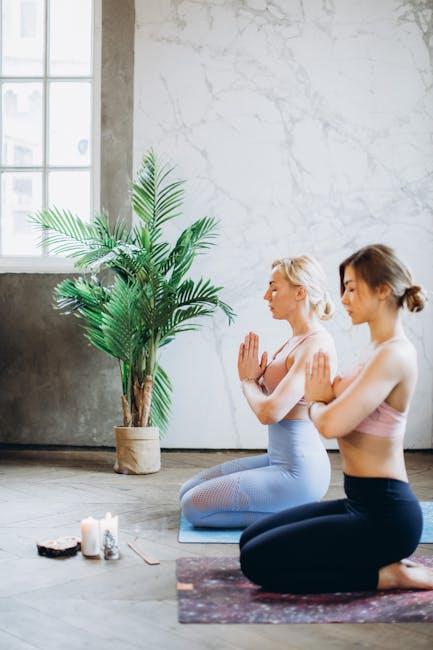As we gracefully navigate the golden years, maintaining balance and coordination becomes essential for ensuring a vibrant and independent lifestyle. While it’s natural for these abilities to change over time, they are not beyond improvement. This article offers practical tips tailored to seniors who are keen on enhancing their balance and coordination. With a blend of empathy and expertise, we aim to guide you through simple yet effective strategies that can make a significant difference in daily life. By integrating these practices into your routine, you can bolster your confidence, reduce the risk of falls, and continue to enjoy the activities you love. Let’s embark on this journey towards a more balanced and coordinated you.
Understanding the Importance of Balance and Coordination in Senior Health
As we age, maintaining physical health becomes increasingly crucial, especially when it comes to balance and coordination. These elements are fundamental in preventing falls and ensuring a quality life. To help seniors enhance their balance and coordination, consider incorporating the following strategies into their daily routine:
- Engage in Regular Exercise: Activities such as tai chi, yoga, or simple stretching exercises can significantly improve balance. These exercises focus on strengthening muscles and enhancing flexibility.
- Incorporate Balance-Specific Exercises: Encourage exercises like standing on one leg, heel-to-toe walking, or using a balance board. These activities specifically target the muscles and reflexes that support balance.
- Use of Assistive Devices: If necessary, assistive devices like canes or walkers can provide additional support and confidence when moving around.
| Activity | Benefits |
|---|---|
| Walking | Improves cardiovascular health and leg strength |
| Chair Exercises | Enhances mobility and flexibility while seated |
| Water Aerobics | Offers low-impact resistance for joint-friendly workouts |
In addition to physical activity, it’s essential to create a safe home environment by removing tripping hazards and ensuring adequate lighting. Regular health check-ups can also help monitor and address any underlying issues that might affect balance and coordination, such as vision or ear problems. Through these combined efforts, seniors can lead a safer and more active lifestyle.

Incorporating Simple Exercises to Enhance Stability and Movement
- Heel-to-Toe Walk: This exercise is simple yet effective for improving balance. Stand with your feet together, then step one foot in front of the other, placing the heel of one foot directly in front of the toes of the other. Continue walking in this manner for about 20 steps. This helps strengthen the muscles and improve coordination.
- Single-Leg Stands: Standing on one leg can significantly enhance stability. Start by standing next to a chair or wall for support. Lift one leg and hold the position for about 10-15 seconds, then switch to the other leg. Repeat this exercise 5-10 times on each side.
- Seated Marching: For those who prefer seated exercises, seated marching is an excellent choice. Sit comfortably in a chair with your back straight. Lift your knees alternately as if you are marching, ensuring each knee reaches hip height if possible. This can be done for 1-2 minutes and helps in maintaining hip flexibility and strength.
| Exercise | Duration | Repetitions |
|---|---|---|
| Heel-to-Toe Walk | 20 Steps | 1-2 Sets |
| Single-Leg Stands | 10-15 Seconds | 5-10 Times Each Side |
| Seated Marching | 1-2 Minutes | 1-2 Sets |
Incorporating these simple exercises into a daily routine can foster a greater sense of balance and confidence in movement. They are designed to be gentle yet effective, ensuring that seniors can perform them safely and enjoy the benefits of improved stability and coordination.

Adapting Your Environment for Safety and Confidence
Creating a safe and confidence-boosting environment is essential for seniors looking to improve their balance and coordination. Here are some thoughtful adjustments you can make:
- Declutter Pathways: Ensure that all walkways in the home are clear of obstacles such as loose rugs, electrical cords, or furniture that might impede movement.
- Install Handrails: Adding sturdy handrails in staircases and bathrooms can provide much-needed support. Consider placing grab bars near toilets and showers.
- Enhance Lighting: Proper lighting reduces the risk of tripping or misstepping. Install nightlights in hallways and bedrooms to ensure visibility during nighttime hours.
Another effective strategy is to make strategic use of furniture and assistive devices:
| Device | Benefit |
|---|---|
| Walker | Provides stability and support during movement. |
| Non-slip mats | Prevents slipping in wet areas like bathrooms. |
| Chair lifts | Assists in safely standing up from a seated position. |
Consider incorporating gentle reminders and visual cues to aid in daily navigation. Labels or signs can be helpful for those with memory issues, while color-coded steps or edges can highlight potential hazards. These thoughtful adjustments not only enhance safety but also empower seniors to move with greater assurance and independence.

Embracing a Holistic Approach to Improve Physical and Mental Well-being
Incorporating a holistic approach into daily routines can significantly enhance both physical and mental health for seniors. A key component of this approach is improving balance and coordination, which can lead to greater confidence and independence. Here are some simple yet effective strategies to consider:
- Mindful Movement Practices: Engage in activities such as Tai Chi or yoga, which emphasize gentle, flowing movements and focus on balance. These practices not only enhance physical stability but also promote mental clarity and relaxation.
- Strength and Flexibility Exercises: Incorporate exercises that target core muscles and improve flexibility, such as leg lifts and seated stretches. These can help in maintaining good posture and preventing falls.
- Cognitive and Sensory Integration: Activities like dancing or playing musical instruments can enhance coordination by requiring the brain to process multiple types of information simultaneously.
| Activity | Benefit |
|---|---|
| Walking on Uneven Surfaces | Improves proprioception and balance |
| Water Aerobics | Low-impact exercise that builds strength |
| Balance Games | Enhances coordination and mental agility |








































